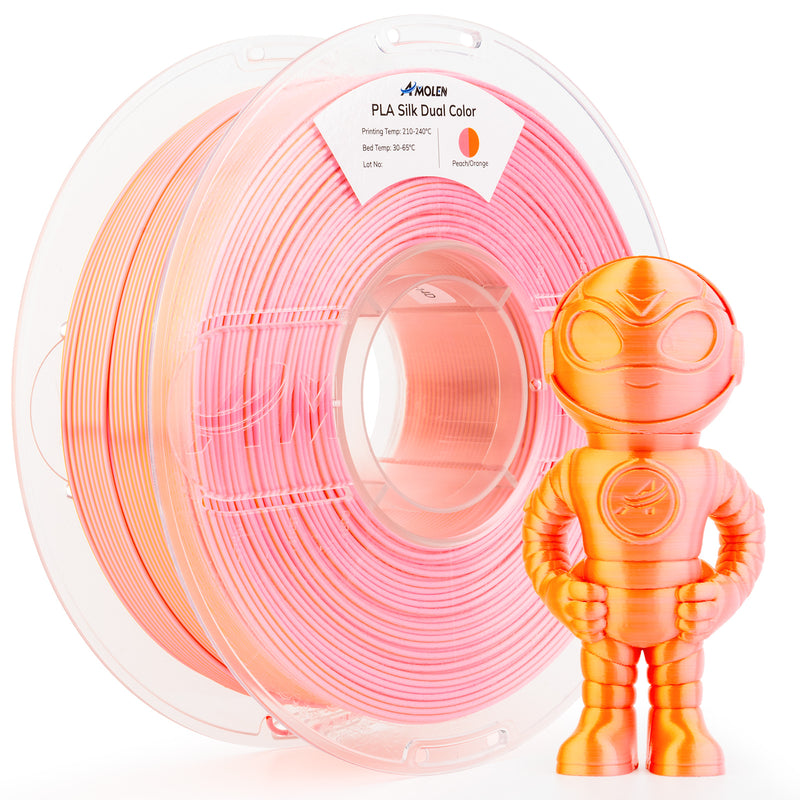Unlock the Secrets of PLA Filament: Discover Why It's the Ultimate 3D Printing Material!
In recent years, 3D printing has revolutionized the way we create and innovate, and at the heart of this transformation lies a remarkable material known as PLA filament. Short for Polylactic Acid, PLA filament is derived from renewable resources such as cornstarch and sugarcane, making it a popular choice among hobbyists and professionals alike. This article will delve into the fascinating world of PLA filament, exploring its unique properties, diverse applications, and how it stacks up against other 3D printing materials. Whether you’re a seasoned 3D printing enthusiast or a curious beginner, understanding PLA filament is key to unlocking new creative possibilities.

What is PLA Filament?
PLA filament is a biodegradable thermoplastic made from renewable resources, predominantly derived from corn starch or sugarcane. Its production process involves fermenting these natural materials into lactic acid, which is then polymerized to create polylactic acid. This eco-friendly approach not only reduces the reliance on fossil fuels but also contributes to a lower carbon footprint compared to conventional plastics. As a result, PLA filament has gained immense popularity in the 3D printing community, especially among those prioritizing sustainability without compromising on performance. It is available in a wide range of colors and finishes, making it an appealing choice for various projects.
Properties of PLA Filament
PLA filament boasts several key properties that make it an ideal material for 3D printing. One of its standout features is biodegradability; PLA can decompose under the right conditions, making it an environmentally friendly alternative to traditional plastics. Additionally, it has a relatively high tensile strength compared to other filament types, which allows for the creation of sturdy and reliable prints. PLA is also known for its flexibility, which enables it to withstand minor impacts without breaking. However, it's important to note that PLA has lower heat resistance compared to materials like ABS; it can start to deform at temperatures exceeding 60°C (140°F). This property makes PLA less suitable for items exposed to high heat but perfect for indoor applications. Moreover, PLA filament has a pleasant sweet smell when heated, which is often noted by users as an added bonus during the printing process.
Uses of PLA Filament
The versatility of PLA filament opens the door to a myriad of applications across different fields. In the realm of prototyping, designers and engineers utilize PLA for creating functional models that can be easily refined and iterated. This is particularly valuable in product development, where quick adjustments can lead to significant improvements. In educational settings, PLA is favored for teaching students the principles of design and engineering, as it is easy to work with and safe to handle. Artists and makers also leverage PLA filament for creating intricate sculptures, detailed miniatures, and custom designs, allowing for a high level of creativity. The material's vibrant colors and smooth finishes enhance the aesthetic appeal of finished products, making it a favorite among hobbyists. A friend of mine, who is an art teacher, often shares stories of how her students have transformed simple ideas into amazing projects using PLA, from geometric shapes to complex character models.
Comparing PLA Filament to Other 3D Printing Materials
When evaluating PLA filament, it's essential to compare it to other common 3D printing materials such as ABS and PETG. PLA is generally easier to print than ABS, as it adheres well to the print bed and requires lower temperatures, making it accessible for beginners. In contrast, ABS is known for its strength and heat resistance, making it suitable for functional parts that need to endure stress and temperature fluctuations. However, ABS can emit unpleasant fumes during printing, requiring proper ventilation. PETG, on the other hand, offers a balance between the ease of use associated with PLA and the durability of ABS. It has superior impact resistance and better temperature tolerance than PLA, yet it is more challenging to print due to its tendency to string. Ultimately, the choice of filament depends on the specific requirements of the project, but PLA’s ease of use and eco-friendliness make it a preferred choice for many.
Pros and Cons of PLA Filament
Like any material, PLA filament comes with its own set of advantages and disadvantages. The primary pros include its biodegradability, ease of printing, and vibrant color options. These benefits make it an excellent choice for those who prioritize sustainability and creativity. However, PLA does have some cons; its lower heat resistance limits its applications in high-temperature environments, and it can be more brittle compared to other materials, making it less suitable for items that require high durability. Additionally, while PLA prints have a beautiful finish, they may not be as robust as those made from tougher materials. Understanding these pros and cons can help users make informed decisions about when and how to use PLA filament effectively.
Key Takeaways on PLA Filament
In conclusion, PLA filament stands out as a quintessential material in the world of 3D printing, thanks to its biodegradable nature, ease of use, and versatility across various applications. Whether you're creating prototypes, educational models, or artistic pieces, PLA offers an excellent balance of performance and sustainability. Its unique properties make it particularly appealing for beginners and experienced users alike, who seek to innovate without contributing to plastic pollution. As we continue to explore the potential of 3D printing, PLA filament will undoubtedly remain a vital player in shaping the future of design and manufacturing, making it the ultimate choice for many.







